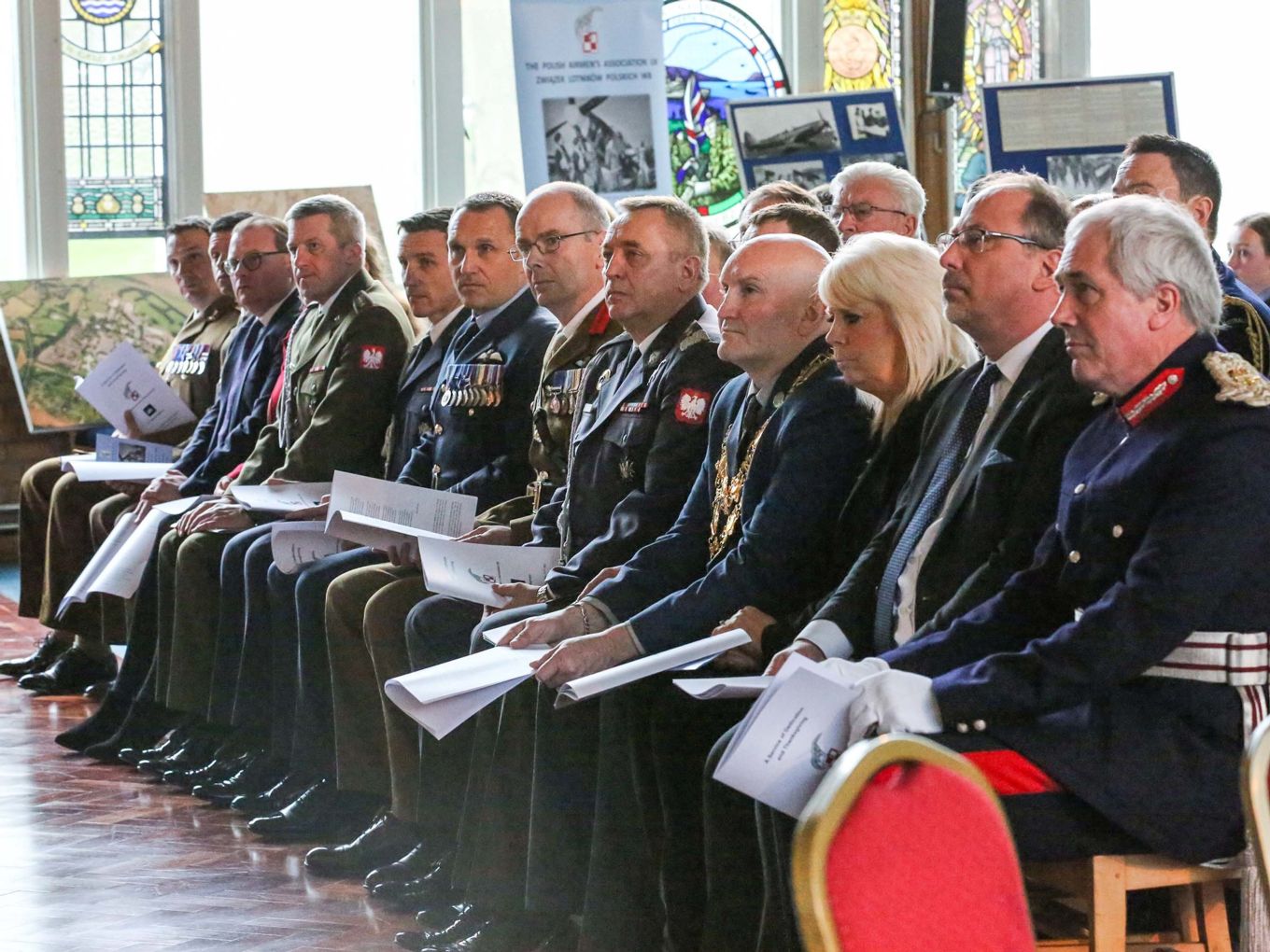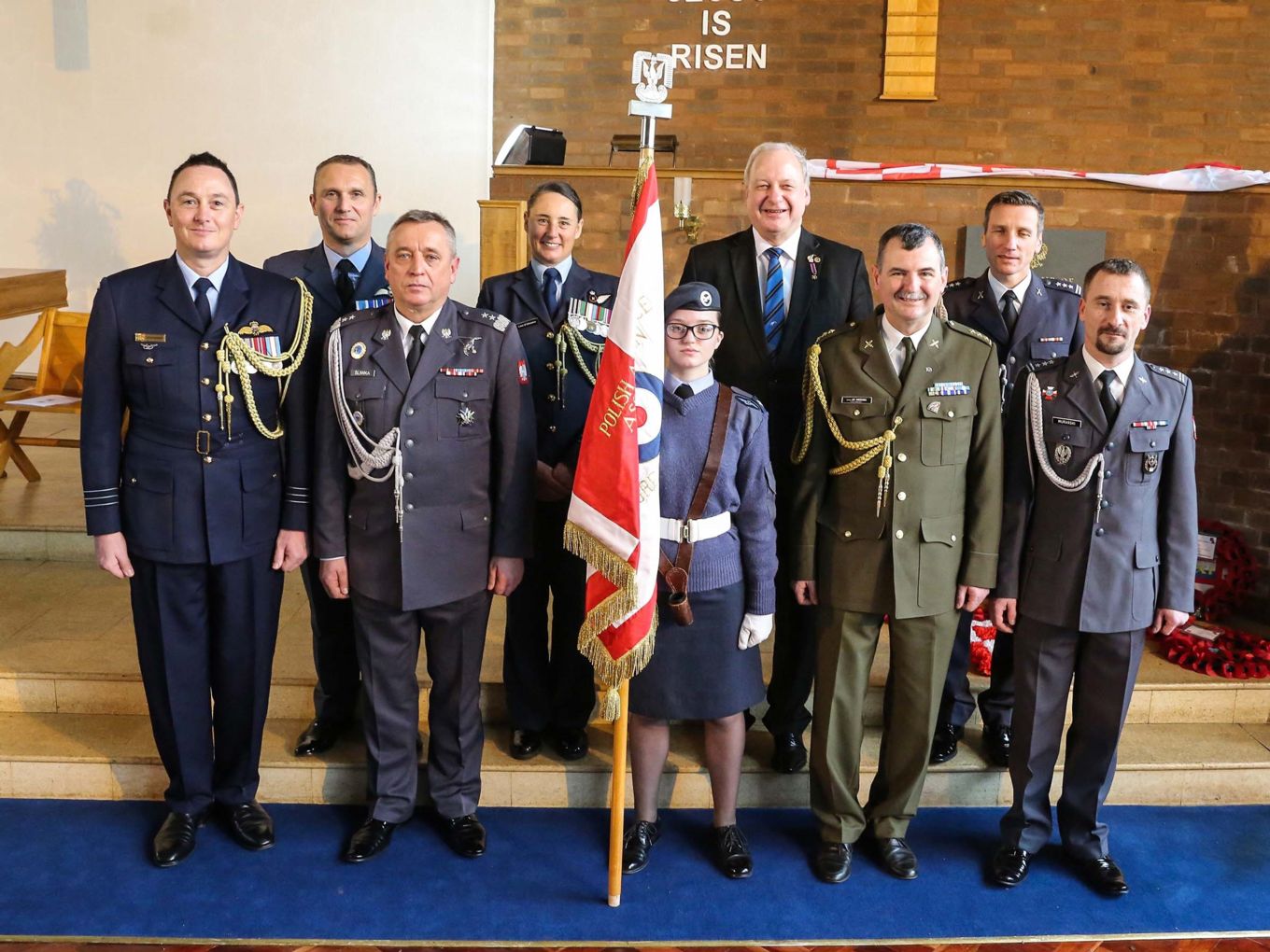A Service of Dedication and Thanksgiving was held at St Nicholas Church, Bramcote Station – the former home of RAF Bramcote – for the Polish and Allied airmen who trained at RAF Bramcote and No 18 Operational Training Unit (OTU).

After being attacked in 1939 and fighting a valiant campaign, Polish troops were ordered to leave their homeland and regroup in France. When the government of France capitulated to the forces of the Third Reich in 1940, Polish servicemen then made their way to the United Kingdom, which they called Wyspa Ostatniej Nadziei or the Island of Last Hope. It was in the United Kingdom that the Polish Air Force was reborn. Polish fighter pilots played a hugely significant role in in the defence of the United Kingdom during the Battle of Britain and flew in Fairey Battle light bombers in raids on northern French where barges being assembled for the invasion of our country.
The polish and British governments agreed that a special unit should be formed to train Polish aircrew members for the Polish element of the RAF. This was named 18 Operation Training Unit (OTU) and it arrived at RAF Bramcote during June 1940. From 18 OTU Polish air and ground crews were posted to four operational squadrons: Nos, 300, 301, 304 and 305.
.jpg)
The Polish bomber squadrons were equipped with Wellington bombers and Polish pilots began flying them on 1 January 1941. In May and June 1942 aircraft from RAF Bramcote and aircrews still in training at 18 OTU took part in the ‘1000 bomber raids’, attacking the heavily defended cities of Cologne, Essen and Bremen.
Accidents were unavoidable in training and some 80 Polish lives were lost between 9 September 1940 and 15 October 1943. Poor visibility when landing, icing of wings at altitude, engine failure, barrage balloons, tall trees and mountains all took their toll, especially during night flying. The remains of these brave me are laid to rest in cemeteries at Newark and Nuneaton.

Integrating Poles into Bomber Command proved very successful and on 1 July 1942 No 18 OTU became fully autonomous and was renamed No 18 (Polish) OTU with a Polish officer commanding the RAF station. The OTU was eventually moved to RAF Finningley near Doncaster in March 1943. During its relatively short existence, 18 OTU trained a total of 250 bomber crews comprising more than 2180 airmen, a remarkable achievement.
A memorial to the airmen was unveiled and wreaths were laid by the Lord Lieutenant of Warwickshire, the Polish Ambassador to the United Kingdom, the Mayor of Nuneaton and Bedworth and representatives from the RAF, Polish Armed Forces, the Czech Embassy, the Royal Australian Air Force, the Royal New Zealand Air Force, the Polish Airmen’s Association UK and 11 Signal and Midlands Brigade.




